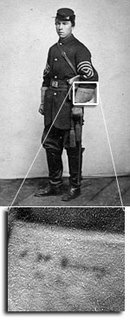Proofreading Deadline Met
My proofreading method involves a comfortable (but not too comfortable) chair, a strong light source, and a glass of water. Then, I read aloud (hence the water), word for word, syllable by syllable, pronouncing each phonetically, mindful of spelling and punctuation and content and accuracy.
When I find an error, I leave the chair and go to a table set up in another room. On this table are the rest of my materials, including a duplicate copy of the proofs and a blue pencil. I grab the blue pencil and make my marks using typesetter symbols — ital to indicate italics, l.c. to denote lower case, etc.
Then, back to the chair and on to the next revision. I consumed many hours by this process: 281 pages plus the foreword, preface and introduction at about four minutes per page (yes, I timed it!). I managed two full rounds of editing, finishing late last night.
Anne managed to read through a sizeable portion, and it helped to know that someone I trust was reading behind me (and it didn’t hurt that she really enjoyed the stories, including one that brought her to tears).
I initially titled this post “Proofreading Completed.” But, considering that I’m not sure proofreading is ever completed, as one can read through over and over again, I decided on the “Proofreading Deadline Met” as it accurately reflects that I read as much as I could until the time came to send it in.
BTW, I didn't bother to proof this post.
Next: Writing the Index.
Labels: book, coddington, confederacy, edit, faces, proof



